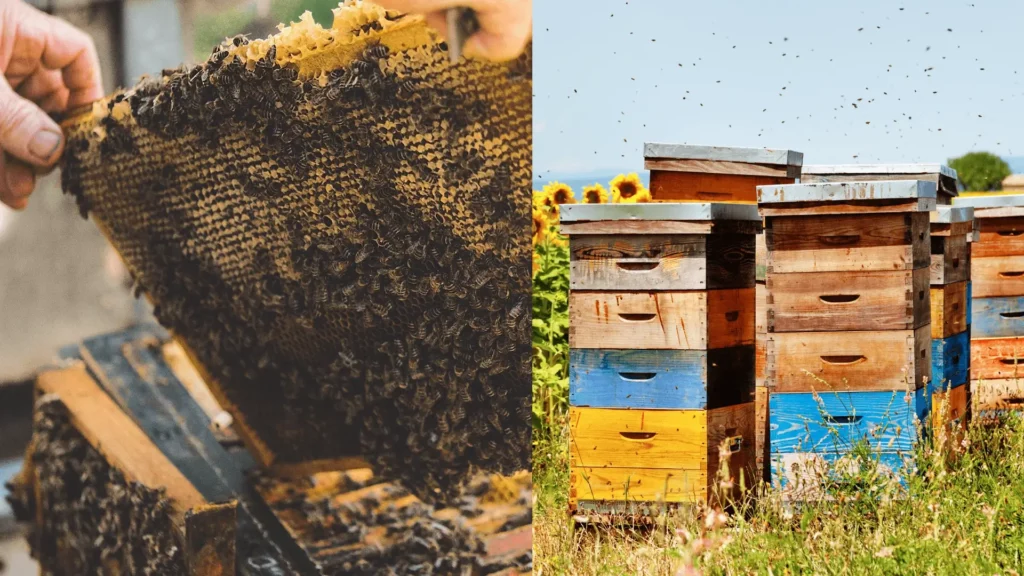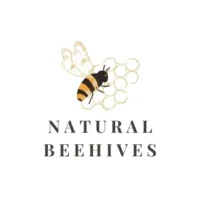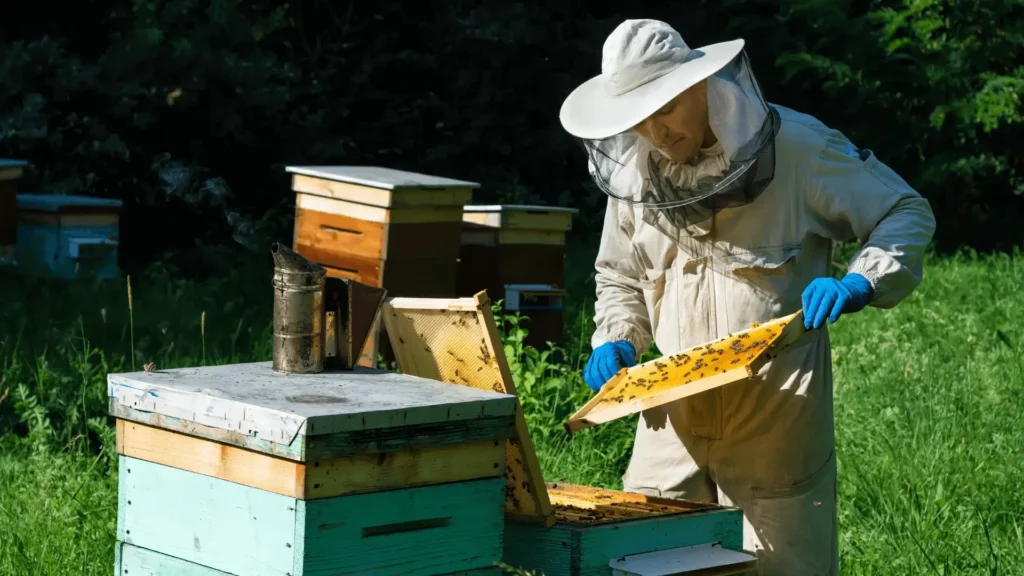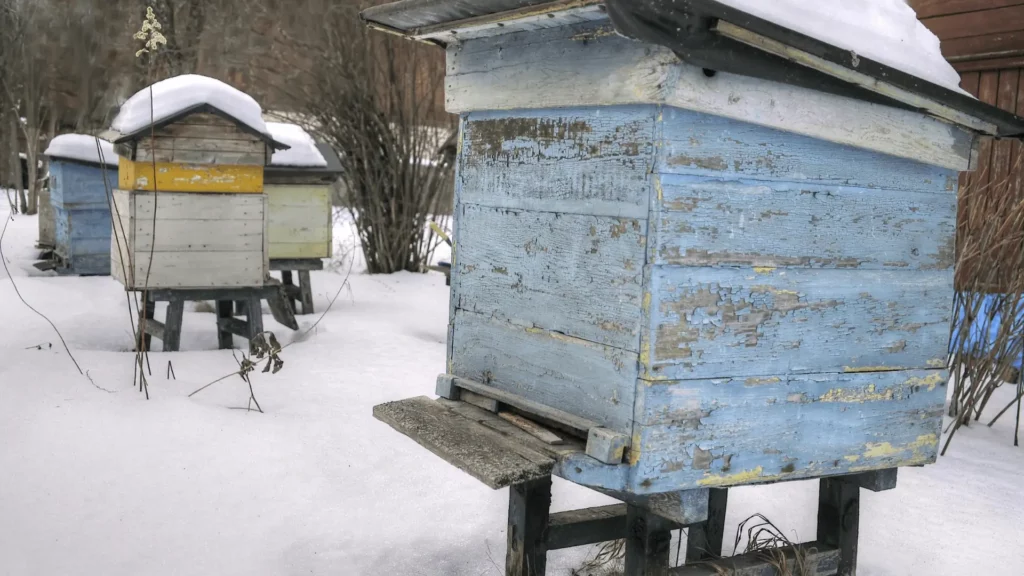
Are you ready to step into the buzzing world of beekeeping? Whether you have a deep-seated love for nature or you’re simply seeking a rewarding hobby, keeping bees can be an incredibly fulfilling endeavor. However, with so many beehive options available, how do you choose the right one for your needs as a novice beekeeper? In our comprehensive article, “Buzz with Confidence: The Ultimate Beehive Selection Guide for Novice Beekeepers,” we’ll delve into the world of beehives and equip you with the knowledge to make an informed decision. Say goodbye to the overwhelming confusion and embrace the excitement of starting your very own colony.
Keep reading as we explore the various types of beehives, their pros and cons, and the factors you should consider before making your selection. From Langstroth to Top Bar and Warre hives, we’ll guide you through the intricate details, ensuring you have a solid understanding of what each option entails. We know that finding the perfect beehive can be a daunting task, but with our expert insights and practical tips, you’ll gain the confidence you need to embark on this extraordinary journey.
The Importance of Beehive Selection
When starting your journey as a novice beekeeper, one of the most critical decisions you’ll make is selecting the right beehive. The beehive you choose will serve as the home for your buzzing buddies, influencing their health and productivity. Let’s dive into the importance of beehive selection and explore some key factors to consider.
1. The Hive Type:
Langstroth Hive: This is the most popular hive type among beekeepers worldwide. It consists of stacked boxes with removable frames, allowing easy inspection and honey extraction.
Top Bar Hive: A more natural approach to beekeeping, the top bar hive features horizontal bars instead of vertical frames. It mimics the bees’ natural comb-building instincts and is ideal for those interested in organic or foundationless beekeeping.
2. Bee Space:
Bee space refers to the optimal distance between frames and hive components, allowing bees to move freely without feeling cramped. It’s important to select a hive that offers the correct bee space, ensuring a comfortable environment for your bees and making hive inspections easier.
3. Hive Design and Material:
Consider the design and material of the hive. Wooden hives, such as those made of cedar or pine, are common. They provide good insulation and are aesthetically pleasing. However, options like polystyrene hives offer superior insulation properties and are lighter in weight.
4. Local Area Considerations:
Understand the environment in your local area. Take into account factors such as climate, flora, and potential pests or diseases. Some hive designs may be better suited for specific conditions, ensuring your bees have the best chance for thriving.
5. Beekeeping Goals:
Consider your beekeeping goals to select a hive that aligns with them. Are you primarily interested in honey production or environmental stewardship? Different hive types cater to different objectives, so it’s essential to choose one that suits your aspirations as a beginner beekeeper.
6. Ease of Management:
As a novice beekeeper, it’s crucial to choose a hive that allows for easy management and regular hive checks. Look for features like removable frames for inspection, adequate ventilation, and accessible entrances to streamline your beekeeping practices.
7. Safety and Suitability:
Ensure the hive design prioritizes safety, both for you and your bees. Look for hives with features such as a small entrance to deter predators, proper ventilation to prevent moisture buildup, and ergonomic handling options for your convenience.
Also read: Beekeepers Toolbox Essentials: Practical Must-Haves for Successful Beekeeping
Exploring Different Types of Beehives
When it comes to beekeeping, choosing the right beehive is crucial for the success and well-being of your bees. There are different types of beehives available, each with its own unique features and advantages. In this section, we will explore some popular options to help you make an informed decision.
1. Langstroth Hive:
The Langstroth hive is one of the most widely used beehives among beekeepers. It consists of stackable boxes with wooden frames that can be easily removed and inspected. This type of hive allows for easy management and manipulation of frames, making it ideal for beginners. With Langstroth hives, beekeepers have the flexibility to expand or contract the hive as needed, depending on the size of the bee colony.
2. Top Bar Hive:
The top bar hive is another popular choice, particularly for beekeepers who prioritize natural beekeeping methods. Unlike the Langstroth hive, it features horizontal bars instead of frames. The bees build their own wax comb, giving them more freedom to create their brood and store honey. The top bar hive provides a fresh perspective on beekeeping and encourages a foundationless frame approach, which is considered less disruptive to the bees’ natural behavior.
3. Warre Hive:
The Warre hive is designed to mimic the environment of a hollow tree. It consists of vertically stacked boxes, each with top bars. This type of hive promotes more natural conditions for the bees, allowing them to build their honeycombs without the use of foundation or frames. The Warre hive emphasizes minimal interference and is well-suited for beekeepers who prioritize environmental stewardship.
Essential Equipment for Beehive Selection
Before diving into the different types of beehives available, it’s essential to understand the equipment you’ll need for successful beekeeping. Having the right tools at hand ensures that you can provide a suitable habitat for your bees and maintain their well-being. Here are the essential pieces of equipment you’ll need to consider when selecting a beehive:
1. Hive Bodies and Supers:
Langstroth Hive: This traditional hive consists of rectangular hive bodies and supers that can be stacked vertically. It offers versatility and is widely used by beekeepers worldwide.
Top Bar Hive: Alternatively, a top bar hive features horizontal bars where bees build their comb naturally. It appeals to beekeepers who prefer a more hands-off and natural approach to beekeeping.
2. Frames:
Foundationless Frame: These frames lack a pre-formed wax foundation, allowing bees to build their comb. They provide a fresh perspective on beekeeping and allow for more natural bee behavior.
Standard Frames: If you prefer a more structured approach, standard frames with wax foundation are readily available. This option provides stability and ease of use for beginners.
3. Bottom Board and Entrance Reducer:
Bottom Board: The bottom board serves as the base of the beehive, providing stability and protection from the elements. It’s important to choose a bottom board that suits the type of hive you’ve selected.
Entrance Reducer: This small device helps regulate the size of the hive entrance, preventing unwanted pests from entering. It’s especially crucial for small and weak colonies.
4. Queen Excluder:
A queen excluder is a mesh-like barrier that restricts the queen bee’s movement, ensuring she remains in the brood chamber rather than venturing into honey supers. It’s a useful tool for managing honey production.
Remember, the equipment mentioned here is just a starting point. Depending on your specific beekeeping goals and the type of hive you choose, additional equipment may be necessary. Always consult with experienced beekeepers in your local area to gain insights into the specific gear requirements for your region.
Also read: The Ultimate Beekeeping Starter Kit: Everything You Need to Get Started
Common Beginner Mistakes in Beehive Selection
Choosing the right beehive for your buzzing friends is crucial to their overall well-being and honey production. As a novice beekeeper, it’s important to avoid common mistakes that can hinder the success of your beekeeping journey. Let’s take a look at some of the most common beginner mistakes in beehive selection and how to avoid them:
1. Neglecting to consider the local area:
Before selecting a beehive, it’s essential to consider the local environment. Different areas have unique climatic conditions, flora, and fauna that can greatly impact your bees. Research about your specific location’s weather patterns, nectar flows, and prevalent diseases to choose a hive that suits your local area.
2. Overlooking the importance of bee space:
Bee space refers to the gap or distance between the hive components. Bees need enough space to move and work efficiently, and these spaces play a crucial role in maintaining colony health. Neglecting bee space can lead to crowding, increased aggression, and difficulty in conducting hive inspections. Take into account the specific bee space requirements for each hive type when making your selection.
3. Ignoring the complexity of hive inspection:
Regular hive inspections are vital for monitoring the health and progress of your bee colonies. However, some hive designs can make inspections more challenging, especially for beginners. Avoid selecting hives that make it difficult to access frames, check on the queen, or perform routine maintenance. Opt for hives that provide ease of use and allow for thorough inspections.
4. Failing to consider the beehive’s expansion capabilities:
As your bee colonies grow and thrive, they will require additional space. Beginners often make the mistake of choosing hives that do not offer expansion options. It’s important to select a hive that allows for the addition of more boxes or frames as your colonies expand. This ensures your bees have enough room to store honey, raise brood, and prevent overcrowding.
5. Disregarding the importance of ventilation:
Proper ventilation is essential for the overall health and well-being of your beehive. Good air circulation helps regulate temperature and humidity within the hive, preventing moisture buildup and reducing the risk of diseases. Neglecting ventilation can lead to dampness, mold growth, and weakened bee colonies. Look for hives that provide adequate ventilation options for optimal hive conditions.
Also read: Winter Beehive Insulation: A Guide to the Best Materials
Ensuring Beehive Compatibility with Your Local Area
One of the key factors for beekeeping success is ensuring that your beehive is compatible with your local area. Different regions have unique climates, flora, and pests that can greatly impact the health and productivity of your honey bees. To give your bees the best chance of thriving, it’s important to consider the following aspects when selecting a beehive:
1. Climate Considerations:
- Research the average temperature ranges, humidity levels, and weather patterns in your area. Certain beehive designs may be better suited for specific climates.
- For colder regions, consider insulated hives or hive wraps to protect your bees during winter. In warmer areas, opt for hives with good ventilation to prevent excessive heat buildup.
2. Flora Availability:
- Familiarize yourself with the predominant flora in your area. Different beehive styles may provide better access for honey bees to nectar and pollen sources in your specific ecosystem.
- If your region has abundant flowering trees, a top bar hive with its horizontal design could be beneficial. In areas with vast meadows, a Langstroth hive with vertical frames might offer more options for honey production.
3. Pests and Predators:
- Research the common pests and predators in your area that can threaten beehives. Varroa mites, hive beetles, and bears are just a few examples.
- Consider hive features that can help mitigate these threats, such as screened bottom boards, entrance reducers, or sturdy locking mechanisms to protect against larger animals.
4. Disease Resistance:
- Some beehive designs prioritize natural comb building, foundationless frames, or smaller cell sizes, which can contribute to healthier bee colonies and offer resistance to certain diseases.
- Be aware of any specific diseases prevalent in your area and consult with local beekeeping associations or experienced beekeepers to determine the best hive options.
5. Local Regulations:
- Check your local regulations and zoning laws regarding beekeeping. Some areas may have restrictions on hive types, hive placement, or require registration.
- Adhering to these regulations not only ensures legal compliance but also promotes responsible beekeeping practices and fosters good relationships with neighbors.
Remember, beekeeping is a journey of continuous learning and adaptation. By selecting a beehive that is compatible with your local area, you provide a solid foundation for your honeybees to thrive and contribute to their ecosystem.
The Complex Social Structure of the Bee Colony
When it comes to beekeeping, understanding the social structure of a bee colony is crucial for novice beekeepers. Bees are highly organized insects that live in colonies or hives, and they have a complex system of hierarchy and division of labor. Let’s dive into the inner workings of a bee colony and explore the roles and responsibilities of different bees.
1. The Queen Bee
At the top of the hierarchy stands the queen bee. She is the matriarch of the colony and the only fertile female in the hive. Her primary role is to lay eggs, up to a staggering 2,000 per day during peak season. The queen bee is larger in size and has a distinct elongated abdomen that sets her apart from the worker bees.
2. Worker Bees
Worker bees, as their name suggests, are the industrious female bees that make up the majority in a hive. Unlike the queen, they are infertile and perform a myriad of tasks to maintain the hive’s functionality. These tasks include collecting nectar and pollen, building and repairing honeycombs, tending to the young bees (larvae), and guarding the hive against intruders.
3. Drones
Drones are the male bees in the colony. Their primary purpose is to mate with virgin queens from other hives. Unlike worker bees, drones do not have stingers or the ability to collect pollen. They are larger in size with stockier bodies, and their presence in the hive is temporary. Once they have fulfilled their mating duties, drones are expelled from the hive by the worker bees during autumn.
Understanding the social structure of a bee colony is essential for novice beekeepers. It helps you grasp the intricacies of bee behavior and enables you to identify and respond appropriately to their needs. By providing a suitable environment and the necessary care, you can ensure the longevity and well-being of your bee colony.
Maximizing Honey Production in Your Beehive
When it comes to beekeeping, one of the most rewarding aspects is harvesting delicious, golden honey. As a novice beekeeper, you may be wondering how to maximize honey production in your beehive. With the right approach, equipment, and practices, you can set your hive up for success and enjoy a bountiful honey harvest.
1. Choose the Right Hive Type:
The type of beehive you select can greatly impact honey production. Langstroth hives are the most popular choice amongst beekeepers due to their versatility and efficiency. They allow for easy honey extraction and management of bee colonies. Top bar hives are a more natural and sustainable option, while Warre hives promote bee-friendly practices with minimal intervention. Consider your preferences, local climate, and management style when deciding on the right hive type.
2. Provide a Suitable Environment:
Bees require specific conditions to thrive and produce honey. Ensure you provide the optimal bee space within the hive. This refers to the right amount of empty space that bees need for movement and ventilation. Additionally, maintaining a small entrance helps guard against predators and maintains hive temperature. If you opt for a langstroth hive, setting up a row of hives encourages bees to work efficiently.
3. Regular Hive Check and Maintenance:
Performing regular hive inspections is crucial for honey production. Check for signs of disease or pests, ensure the queen is present and healthy, and assess the overall health of the colony. Remember to customize your inspections based on the specific needs of your hive, as different hive types may require slightly different approaches. Regular maintenance, like cleaning and replacing old comb, helps create a clean and productive environment for your bees.
4. Manage Honey Supers:
To maximize honey production, it’s important to manage honey supers effectively. A honey super is an additional box added above the brood chamber where bees store surplus honey. Depending on the hive type, supering may involve adding new boxes or frames. Use proper beekeeping gear, such as a bee suit and smoker, to protect yourself during this process.
Bee Space: Understanding the Importance in Beehive Design
When it comes to beehive design, one crucial concept that novice beekeepers must grasp is bee space. Bee space refers to the specific amount of space that bees need to move and work comfortably within the hive. It’s a critical consideration in beehive construction and plays a substantial role in the overall health and productivity of your colony.
1. What is Bee Space?
Bee space is the gap or distance left between the various components of a beehive. It provides enough room for bees to pass through, interact, and perform their assigned tasks diligently. The optimal bee space is around 3/8 of an inch (9.5mm), which allows bees to move freely without feeling cramped or hindered.
2. The Significance of Bee Space
Maintaining the correct bee space is essential for several reasons:
Good Ventilation: Adequate space helps with air circulation within the hive, preventing moisture buildup and reducing the risk of diseases.
Easy Movements: Bees require space to navigate their hive comfortably, allowing for efficient foraging, brood rearing, and honey production.
Reduced Aggression: When bees have the right amount of space, they are less likely to feel overcrowded, leading to a calmer and less defensive colony.
3. Bee Space Guidelines
Understanding bee space is crucial, but how can you ensure you maintain it correctly? Here are some guidelines to follow:
Hive Components: When assembling your hive, make sure all components are well-aligned and fit together snugly, leaving the recommended bee space between frames, boxes, and other hive elements.
Frame Spacing: Place frames within the hive with even spacing to allow bees to move and work freely, while still maintaining the necessary bee space.
Hive Inspections: During your regular hive checks, ensure that there are no tight or excessive gaps between frames or boxes. This will help maintain the ideal bee space as the colony expands.
Also read: Beginner’s Guide: Estimating the Cost of Starting a Beehive
Conclusion
With the right beehive, you can set your buzzing buddies up for success. Remember, your choice matters, so consider the size, material, and design that suits your needs. Whether you opt for a Langstroth or a top-bar hive, ensure it has enough space for expansion and good ventilation. And don’t forget to protect your bees from pests and predators with proper hive maintenance and regular inspections. Now that you’ve mastered the art of beehive selection, it’s time to dive into the fascinating world of beekeeping. Explore our other blogs for more tips on beekeeping basics, honey production, and sustainable beekeeping.



